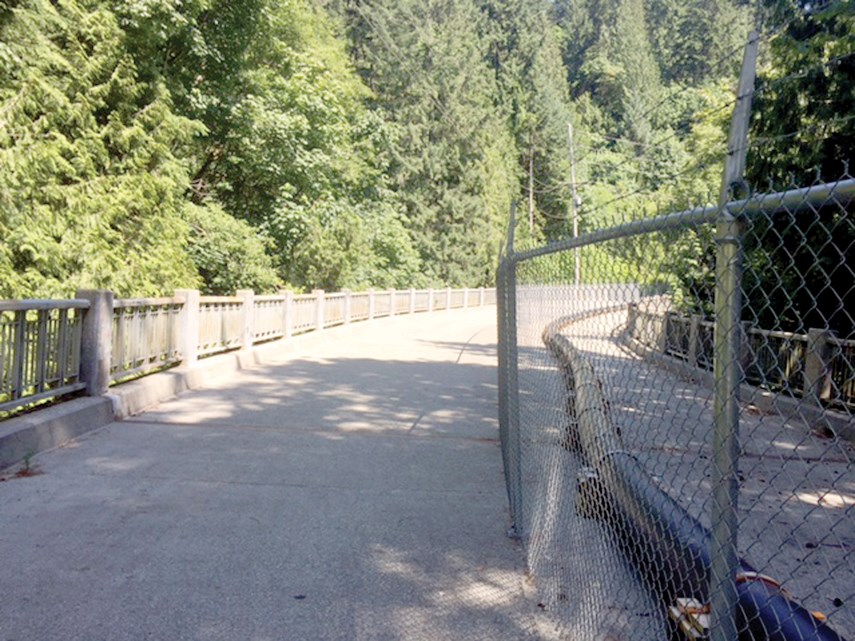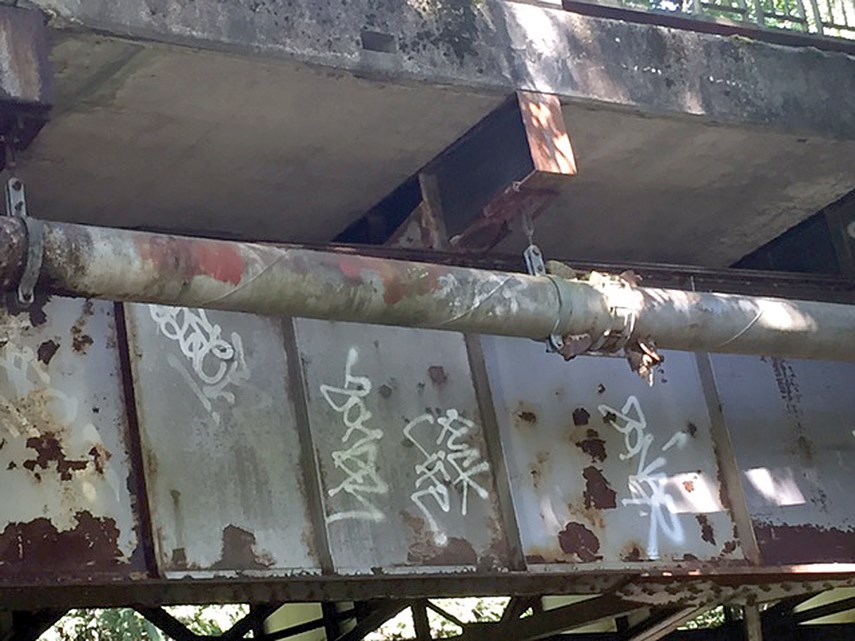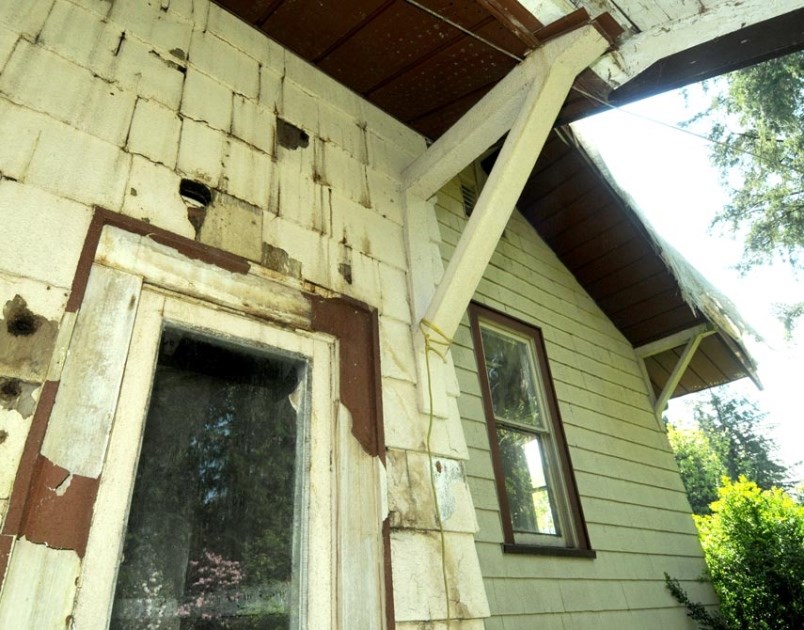The roof’s sprung a leak, concrete is crumbling but there’s no money in the piggy bank to fix things.
The District of West Vancouver won’t be the first property owner to face that dilemma, but how council chooses to deal with it could have a significant impact on user groups and taxpayers.
Currently the municipality doesn’t have the money for repair and upkeep of a number of district assets, staff told council members at their regular meeting Monday.
The direst examples, according to a staff report, include buildings on the Klee Wyck property that used to house community arts programs, the 60-year-old Nelson Creek Bridge, a Whytecliff Park caretaker residence, Larson Bay tennis court and two neighbourhood playgrounds, at Erwin and Westwood parks.
In those cases, staff are recommending demolition, although council has yet to vote on that.
Currently the municipality estimates it needs about $14.5 million to cover capital investments, including maintenance and repairs, Isabel Gordon, director of finance, told council. But getting to that would mean a tax increase of about two percent next year to bring in an additional $1.5 million through the asset levy, she said.
The sobering news about the state of West Vancouver’s assets – which include buildings, equipment and infrastructure, but not land – was presented Monday during a report by Gordon on asset management.
While some assets like roads and recreation centres are in relatively good condition, over a third of other district buildings have been identified as being in poor condition.
Since 2015, the municipality has worked to get a handle on the condition of its assets and to come up with a plan for maintaining, replacing or getting rid of them. The idea, said Gordon is not to wait until things break down or “run them into the ground” but to get ahead of problems and prioritize where money should be spent. Money, however, has proved to be a major sticking point.
In 2016, council introduced a new “asset levy” as part of the tax bill for West Vancouver homeowners, but is still playing catch up, said Gordon.
Part of the underlying problem is the focus on the initial capital costs, she said.
“It leads to poor decision-making,” she said. “You can end up with too many assets, because you’re always attracted by the shiny new ones,” leaving a financial iceberg of maintenance costs underwater.
Turning a blind eye to issues or hoping another level of government will pay has been “a popular strategy in the municipal world,” she said.
But difficult decisions can’t be put off forever, she warned, noting costs usually only increase with delays.

No. 1 on the hit list of assets with low community use in poor condition is the 60-year-old Nelson Creek Bridge over Nelson Canyon, which the district inherited from the former provincial ministry of highways. The bridge provides a pedestrian connection and also supports a key water main. But it is in such poor condition that the underside of the concrete bridge deck is separating from its reinforcing steel bars and risking pieces of concrete falling into the creek below, according to the staff report. Replacing the bridge is urgent, according to staff, because further deterioration will make it difficult to get a crane in to the site to do the work. Dismantling it and building a new foot bridge has been pegged at a price of $2.13 million.

Another difficult decision looms on the Klee Wyck property on the banks of the Capilano River originally bequeathed to the district in 1960. The house on the property is currently “uninhabitable” and will have to be demolished, according to the report. Staff is recommending a property use plan and public consultation be conducted before that happens.
A number of buildings with high community use have also been flagged as being in poor condition for future planning purposes. Those range from the ice arena to fire hall No. 1 to the seniors’ activity centre.
Coun. Nora Gambioli said she agreed with most of the recommendations in the report, but flagged the potential tax increase and cost of the bridge project as concerns.
Coun. Craig Cameron said he’d like to explore getting user groups of some of the facilities to foot more of the maintenance costs. “I would hope we’d have some creative ways (to pay for those) other than just using tax dollars,” he said.
Mayor Mary-Ann Booth added the report highlighted problems that arise when the municipality is “given” assets that end up being a drain on municipal coffers. “If you’re given the asset, be careful what you wish for because you’ll be maintaining it for the long term,” she said.
Council voted to accept the report for information.



